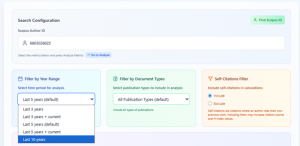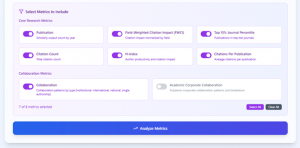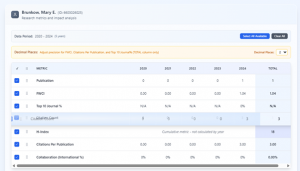New Books by HKUST Scholars 2025 – Business and HSS
Last month we introduced nine new SciTech books authored by HKUST researchers. In this post, we feature eight new books in the fields of business, humanities and social sciences.
Last month we introduced nine new SciTech books authored by HKUST researchers. In this post, we feature eight new books in the fields of business, humanities and social sciences.
Late last week, arXiv updated its policy on posting review articles and position papers in the Computer Science category. Previously, such papers were accepted at the discretion of moderators.
Want to use AI for academic research with confidence? The HKUST Library’s “AI Tools for Academic Research” is a self-paced mini-course designed for busy students like you.
This year’s Nobel Prize in Physiology or Medicine tells such a story. Mary E. Brunkow, whose work brought new understanding of the immune system, has only 31 papers and an H‑index of 22 based on the data from scopus of 9th Oct 2025. She never appeared on Stanford’s Top 2% Scientists list. Yet her curiosity and determination led to a breakthrough that changed how we view human health. Her journey shows that top-tier scholars isn’t merely defined by metrices only— it’s driven by questions. She didn’t simply chase citations, H-index or rankings; she pursued meaningful discoveries and breakthroughs in research, and that pursuit earned her one of the world’s highest honors – the Nobel Prize.
 2. Scroll down, and choose the research metrics you want to analyze — for example: Publications, Citation Count, or H‑index.
3. After confirming your selection, click “Analyze Metrics.”
2. Scroll down, and choose the research metrics you want to analyze — for example: Publications, Citation Count, or H‑index.
3. After confirming your selection, click “Analyze Metrics.”
 4. This platform will retrieve data in real time through the SciVal API on the backend. You can reorder, add, or remove metrics as needed.
4. This platform will retrieve data in real time through the SciVal API on the backend. You can reorder, add, or remove metrics as needed.
 5. Once finished, export your results as a PDF or Excel file for reporting or further analysis.
5. Once finished, export your results as a PDF or Excel file for reporting or further analysis.

From Aug 2024 to Aug 2025, scholars from HKUST have published a total of 17 books, as indicated in our Institutional Repository.
Using the Topic Modeling Tool developed under the Library’s DS CoLab project, we applied a natural language processing (NLP) approach to analyze posts from the HKUST Library’s Research Bridge Blog.
In today’s digital era, GenAI is transforming the way we approach research, learning, and teaching. To truly harness its power, it’s essential to stay in control and accountable for your work.
In our last post, we explored the connection between the SDGs, subjects, and keywords. Looking to connect your research with the SDGs? Our in-house developed tool, the SDG Keywords & Classifier, helps you do exactly that.
The recent THE Impact Rankings, which evaluate universities’ contributions to UN’s Sustainable Development Goals (SDGs), ranked HKUST among the world’s top 20 and HK’s No. 1 for the second consecutive year.
Embargo periods? Green or Gold OA? Data archiving rules? With publications piling up, navigating publisher and funder policies to enable open access can feel like a maze.